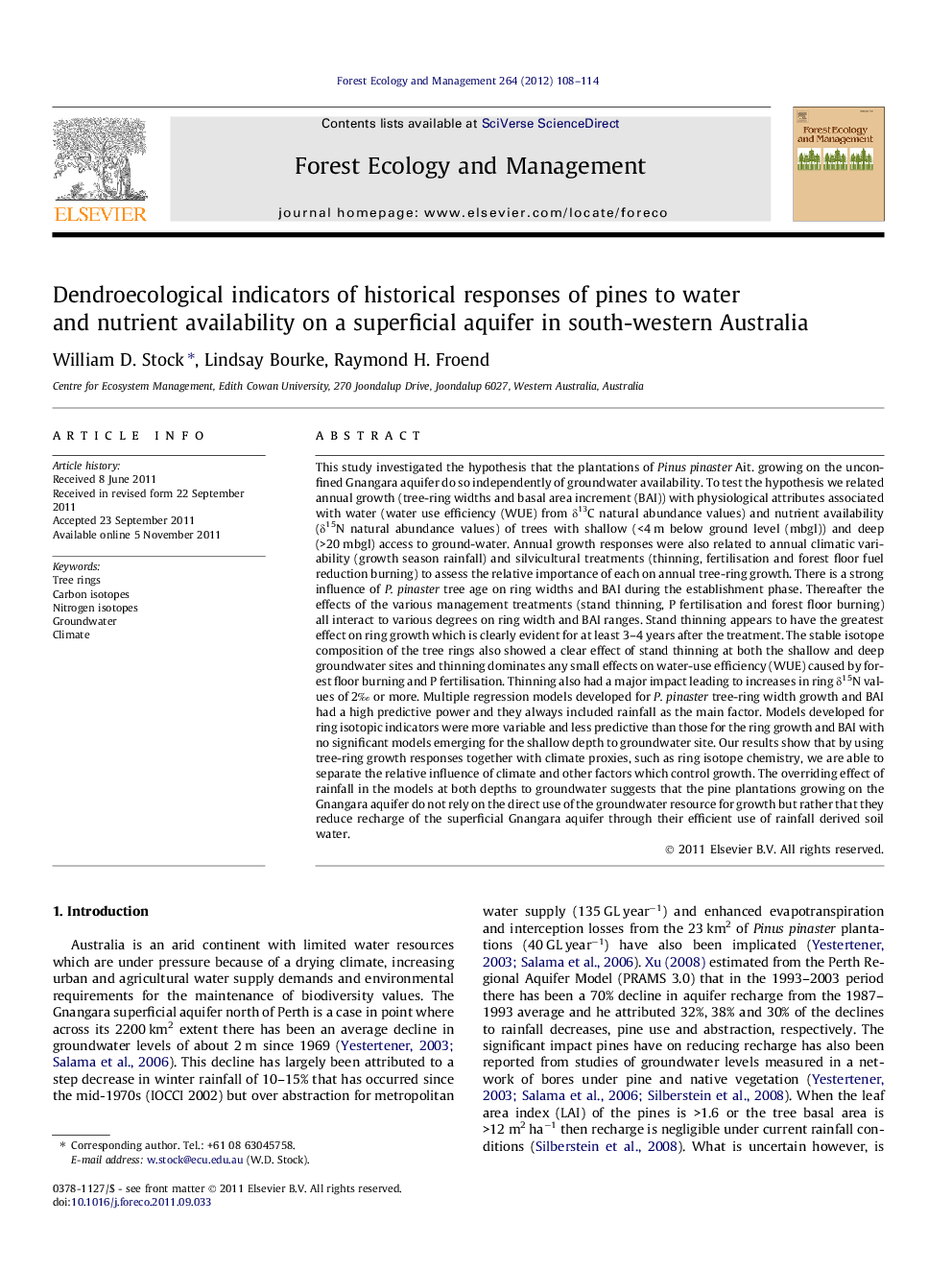| کد مقاله | کد نشریه | سال انتشار | مقاله انگلیسی | نسخه تمام متن |
|---|---|---|---|---|
| 87490 | 159253 | 2012 | 7 صفحه PDF | دانلود رایگان |

This study investigated the hypothesis that the plantations of Pinus pinaster Ait. growing on the unconfined Gnangara aquifer do so independently of groundwater availability. To test the hypothesis we related annual growth (tree-ring widths and basal area increment (BAI)) with physiological attributes associated with water (water use efficiency (WUE) from δ13C natural abundance values) and nutrient availability (δ15N natural abundance values) of trees with shallow (<4 m below ground level (mbgl)) and deep (>20 mbgl) access to ground-water. Annual growth responses were also related to annual climatic variability (growth season rainfall) and silvicultural treatments (thinning, fertilisation and forest floor fuel reduction burning) to assess the relative importance of each on annual tree-ring growth. There is a strong influence of P. pinaster tree age on ring widths and BAI during the establishment phase. Thereafter the effects of the various management treatments (stand thinning, P fertilisation and forest floor burning) all interact to various degrees on ring width and BAI ranges. Stand thinning appears to have the greatest effect on ring growth which is clearly evident for at least 3–4 years after the treatment. The stable isotope composition of the tree rings also showed a clear effect of stand thinning at both the shallow and deep groundwater sites and thinning dominates any small effects on water-use efficiency (WUE) caused by forest floor burning and P fertilisation. Thinning also had a major impact leading to increases in ring δ15N values of 2‰ or more. Multiple regression models developed for P. pinaster tree-ring width growth and BAI had a high predictive power and they always included rainfall as the main factor. Models developed for ring isotopic indicators were more variable and less predictive than those for the ring growth and BAI with no significant models emerging for the shallow depth to groundwater site. Our results show that by using tree-ring growth responses together with climate proxies, such as ring isotope chemistry, we are able to separate the relative influence of climate and other factors which control growth. The overriding effect of rainfall in the models at both depths to groundwater suggests that the pine plantations growing on the Gnangara aquifer do not rely on the direct use of the groundwater resource for growth but rather that they reduce recharge of the superficial Gnangara aquifer through their efficient use of rainfall derived soil water.
► We used a dendroecological method to assess groundwater dependence of pines.
► Tree-ring growth of Pinus pinaster was related to rainfall and not groundwater.
► Stable isotopes confirmed the climate control on growth.
► Multiple regression models of P. pinaster ring growth always included rainfall.
► Pines reduce recharge through their efficient use of rainfall derived soil water.
Journal: Forest Ecology and Management - Volume 264, 15 January 2012, Pages 108–114